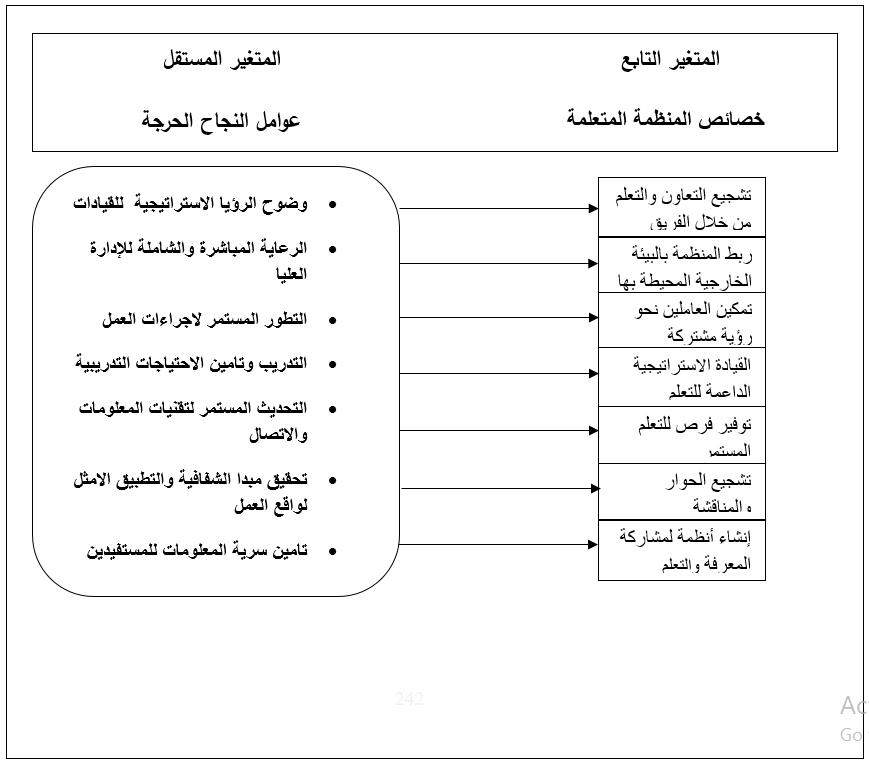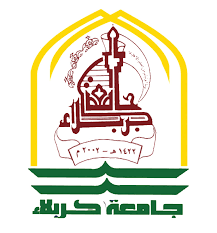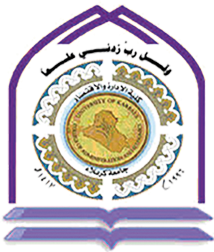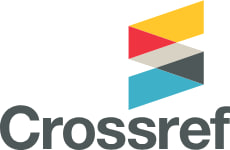The relationship between learning organizations characteristics and critical success factors
دراسة تحليلية لآراء عينة من القيادات والعاملين في رئاسة جامعة الكوفة
Keywords:
learning organization, promoting cooperation, empowering workers, encourage dialogue, critical factors, Kufa UniversityAbstract
Study builds recognize the reality of the University of Kufa in terms of adoption of the concept of learning organizations. And make recommendations that will improve the performance of the university on the development of knowledge and intellectual capital, and the importance of the study of the importance of universities and large responsibility of higher education and out of modern management attention directed towards Knowledge intellectual Capital, Learning organization was used as a tool for measuring the characteristics of a questionnaire, the study sample consisted of (61)Human resource members of the university leaders, faculty, staff and staff at the university level body exclusively and its departments, Data was analyzed using percentages and averages, and analysis of variance. The results showed that the adoption of the characteristics of a learning organizations are (promoting cooperation and learning through the group, linked to the organization of Foreign surrounding environment, enabling workers toward a common vision, strategic leadership in support of learning, providing opportunities for continuous learning, encourage dialogue and discussion, the establishment of a knowledge sharing and learning systems). The critical success factors in the study offered a learning organization at least the characteristics of an application at the university and that call for a movement organized and quickly by the university to improve the rates of those characteristics as well as to view the most characteristics in application, which can be invested, pushing the university toward learning and build a learning organization and invest their capital in those characteristics, Where there is an urgent necessity makes it imperative for organizations working to follow a specific methodology for continuous learning The study found a set of conclusions and recommendations, Including high averages of paragraphs variable (CSFs), These results indicate that workers at the University of Kufa responses on these variables was the (positive), and the level of assessment of the paragraphs of this variable was (high) from the perspective of workers in the mentioned university. The study found, to provide senior leadership in every organization support CAF for all employees in different job categories to connect with learning through their participation in conferences, seminars and training programs varied for the purpose of encouraging individual and collective learning as well as the regulatory environment appropriate to provide for learning and reward workers who participated in the conference events, or who have received the rehabilitation of scientific best.
.Key words: learning organization, promoting cooperation, empowering workers, encourage dialogue, critical factors, Kufa University.
References
اولآ:- المصادر باللغة العربيه
جوادي , بلقاسم , (2015) " التعلم التنظيمي وعلاقته بتمكين العاملين " , دراسة ميدانيه على عينه من عمال مديرية توزيع الكهرباء والغاز لولاية الاغواط , مذكرة نهاية الدراسة لنيل شهادة الماجستير في علم النفس , جامعة محمد خيضر بسكرة , كلية العلوم الانسانية والاجتماعية , قسم العلوم الاجتماعية .
حسانين, جاد الرب عبد السميع , (2011) " خصائص المنظمة المتعلمة وأثرها في تنمية قدرات التفكير الابتكاري" , دراسة تطبيقية على بعض المنظمات الخدمية والصناعية التابعة لقطاع الاعمال العام بمحافظة الدقهلية , المنظمة العربية للتنمية الادارية , جامعة الدول العربية .
الحضيف ,سليمان بن عبد الله , (2012) " عوامل تجاح نظام ادارة سلسلة الامداد وعلاقتها برضا المستفيدين في المنظمات الحكومية بالمملكة العربية السعودية " المجلة الاردنية في ادارة الاعمال , المجلد 8, العدد 1 .
الذياب, سعود بن ذياب ,(2014) ," مدى توافر متطلبات المنظمة المتعلمة ومجالات تطبيقها بالكلية التقنية بالخرج" رسالة ماجستير غير منشورة ,قسم العلوم الامنية, كلية العلوم الاجتماعية, جامعة نايف العربية
زرعة , سوسن بنت محمد ,( 2014 ) ," مدى توافر خصائص المنظمة المتعلمة في جامعة الاميرة نوره بنت عبد الرحمن من وجهة رئيسات الاقسام الاكاديمية " المجلة الدولية التربوية المتخصصة , المجلد 3, العدد 9 .
الزعبي, حسن علي ,(2005) ,"نظم المعلومات الاستراتيجية : مدخل استراتيجي " , الطبعة الاولى , دار وائل للنشر عمان , الاردن.
السويدان, طارق,( 2012)," الاتجاهات الحديثة في الادارة منهجية التغيير في المنظمات ـ المنظمة المتعلمة ـ قيادة السوق ,ط1, قرطبة للنشر والتوزيع, الرياض.
الشريفي , عباس عبد مهدي , واخرون , ( 2012) " درجة توافر ابعاد المنظمة المتعلمة بجامعة الشرق الاوسط من وجهة نظر اعضاء هيئة الندريس" مجلة العلوم التربوية , العدد 1, جامعة الشرق الاوسط , المجلة الاردنية الهاشمية .
الشلفان, عادل احمد , ( 2012) " دور المنظمة المتعلمة في الالتزام الوظيفي" , دراسة مسحية على موظفي البنك السعودي للتسليف والادخار في مدينة الرياض , المجلة الاردنية في ادارة الاعمال , المجلد (8) العدد (1) : ص 82-105 .
العبادي , سناء عبد الرحيم سعيد , العتبى, تاغي زيدان محمد ناصر, (2014) " تأثير عناصر النجاح الحرجة في تحقيق الميزة التنافسية المستدامة بحث ميداني لآراء عينة من المدراء في شركة المعتصم العامة للمقاولات الانشائية " مجلة العلوم الاقتصادية والادارية , المجلد 20 , العدد 2014 .
عبد الفتاح , فداء (2013) ," درجة توافر خصائص المنظمة المتعلمة لدى مديري المدارس الحكومية في محافظات شمال الضفة الغربية ووسطها من وجهات نظرهم " , رسالة ماجستير غير منشورة , جامعة النجاح الوطنية – نابلس
العنزي , سعد علي حمود , عمير, عراك عبود (2015) " تعظيم الاستراتيجيات التنافسية العامة في اطار عوامل النجاح الحاسمة وعملية ادارة المخاطر " بحث تطبيقي في عينة من المصارف العراقية الخاصة , مجلة العلوم الاقتصادية والادارية ,المجلد (21) , العدد (83) : ص1-20.
العياصرة, معن , الحارثي,خلود,(2015)," درجة ممارسة مديرات المدارس الثانوية بمدينة الطائف لأستراتيجيات المنظمة المتعلمة", المجلة الاردنية في العلوم التربوية, مجلد 11, العدد1, 31ـ43 .
الغالبي, طاهر محسن , ادريس , وائل محمد (2009) " الادارة الاستراتيجية – منظور منهجي متكامل ) دار وائل للنشر , عمان .
القحطاني, فاطمه محمد ,(2012) " التعلم التنظيمي مدخل للتحول الى مفهوم المنظمة المتعلمة في الجامعات السعودية" , دراسة تطبيقية على جامعة الامام محمد بن سعود الاسلامية , رسالة ماجستير غير منشورة , الرياض , جامعة الامام محمد بن سعود الاسلامية .
القواسمة , فريد والعمري , زياد ,( 2012) ," ابعاد المنظمة المتعلمة وتاثيرها على الاداء التنظيمي " دراسة حاله على شركة الاتصالات الاردنية , مجلة الاعمال والاقتصاد العربية , المجلد (8) , : ص 38-52 .
الكبيسي, أريج ميمون ,(2013) " درجة توافر ابعاد منظمة التعلم في المدارس الاساسية الخاصة في محافظة عمان وعلاقتها بالابداع الاداري للمديرين من وجهة نظر المعلمين " رسالة ماجستير غير منشورة, جامعة الشرق الاوسط, كلية العلوم التربوية, قسم الادارة والمناهج .
المالكي , حنان رحيم عنيد ,(2010)" تأثير عوامل النجاح الحرجة في إدارة المنظمات دراسة استطلاعية تحليلية في شركة المنصور العامة للمقاولات الإنشائية " رسالة ماجستير , كلية الادارة والاقتصاد , جامعة بغداد .
النعيمي , صلاح عبد القادر , نايف, باسم فيصل , ( 2012) ," دور عمليات ادارة المعرفة في بناء المنظمة المتعلمة " مجلة كلية بغداد للعلوم الاقتصادية , العدد (31) , ص 161-190 .
ثانيآ:- المصادر باللغة الاجنبية
-Antonio's Michail, (2011), "An investigation of the relationship between value Chan activities and generic strategies in small and medium- size enterprises in U.K manufacturing" A Thesis of degree of doctoral philosophy in international business University of central Lancashire .2(3-4):110-113.
-Balderstone, Steven &mabin, Victoria (2010) "A Review of Goldratt's theory of constraints (TOC)-lessons from the international literature.www.tocca.com.
-Bersenaite, J. and Saparnis, G. (2007). Assessment of Features, State and Success Factors of a Learning Organization: Aspect of Staff Opinions. Social Research, 1 (9): 20-27.
-Caralli,R. ( 2004),"The critical success factor method :Establishing A foundationforEnterprise Security management ",Carnegie Mellon softwareEngineeringInstitute .July.
-Clodwell, D & Fried, A. (2012). Learning organizations without borders A cross-cultural study of university HR practitioners perceptions of the salience of Senge s five disciplines in effective work outcomes Commerce Law and Management, 1(1), 32-44.
-Carmeli, Abraham &Sheaffer, Zachary, (2008), “How LearningLeadership and Organizational Learning from Failures Enhance PerceivedOrganizational Capacity to Adapt to the Task Environment” The Journalof Applied Behavioral Science, Vol. 44, No. 4: 468-489.
--Coulson-Thomas, Colin,( 2005)," Creating a WinningBoard, Viewpoint", Vol. 21, No.3.
-Dewar, Tammy & Whittington, Dave, (2004), “A strategic approach toOrganizational learning”, Industrial and Commercial Training, Vol.36,No.2: 265-268.
–Egan , T.,(2002 )“ Learning Organization Dimensions and Motivation to Transfer LearningLarge Firm Information Technology Employees “, University of Minnesota , PHD.v63-08A of Dissertation Abstractes International , P.2938.
-Feizi,M., (2013): Surveying the relationship between learning organization andjobperformance in power transfer organization of Khuzestan Province,International journal of management and social sciences research, Vol (2), No (4),pp: 134-138
-Garvin, D., Edmondson, A., & Gino, F. (2008). Is Yours a Learning- Organization? Harvard Business Review, 86(3), 109-116.
-Glosser, Gisele,( 2012)," Cooperative Learning Techniques" Math Goodies NewsLetter, March (27), P:1-2
- HafedhAlShihi,( 2006)," Critical Factors in the Adoption and Diffusion of E-government Initiatives in Oman"This thesis is submitted in fulfillment of the requirements for the degree of Doctor of Philosophy School of Information SystemsFaculty of Business and Law Victoria University.
-Huber, G. (2006) “Organizational learning“, organizational science,Vol.2: 88-115.
-Kelly, Diane R.; Murray Lough; Rosemary Rushmer; Joyce E. Wilkinson; GailGreig&Huw T. O. Davies, (2007), “Delivering feedback on learningorganization characteristics- using a Learning Practice Inventory”, Journal ofEvaluation in Clinical Practice, Vol. 13, No.5.
-Marsick, V. & Watkins, K., (2003): Demonstrating the value of an organization’s
learning culture: The dimensions of the learning organization questionnaire,Advances in developing human resources, Vol (5), No (2), pp: 132-151.
-Malek, Muhammad Ehsan, Danish, RizwanQaiser and Munir, Yasin, (2012,) " Determinants of Learning Organization in Higher Education Institutesof Pakistan: A Correlational Study",International Journal of Innovation, Management and Technology, Vol. 3, No. 2:Pp(117-120).
-Murray, P., Chapman, R. (2003), "From continuous improvement toorganizational learning: developmental theory", The Learning Organization,Vol. 10, No.5.
-Marquardt, M., (2002)" Building the learning organization," Mastering the 5elements for corporate learning, Second edition, Davies Black Publishing,California.
-Pohyen Ng(2010), learning organization dimensions on knowledge sharing, a study of faculty members in private universities in Malaysia ,www.academic–papers.org/ocs2/session/papers/B8/111322/2-1-DR-doc
-Razali, M. &Amira, N. &Shobri, N., (2013): Learning organization practices and job satisfaction among academicians at Public University, International journalof social and humanity, Vol (3), No (5), pp: 518-522.
- Raduan, C.R.&Jegak U.&Haslinda A.&Alimin I.I.(2009) "Management, strategic management theories and the Linkaga with organizational competitive Advantage from the Resource-Based view" European Journal of social sciences, vol.11, No.3, P.403-417.
-Ranjan, Jayanthi&Bhatnagar, vishal (2008) "critical success factors for Implementing CRM using Data mining" Journal of knowledge management practice, vol.9, No.3, P.1-7
-Senge, Peter, (1990), "The fifth discipline: the art and practice of the learningorganization", Doubleday Dell Publishing Group.
-Senge P.M. (2007). The fifth discipline the art and practice of the learningorganization, Random House: Business Books, UK.http://www.amazon.ca/s?_encodingRetrieved: 10/1/2013
-Skuncikiene, S., Balvociute, R., Balciunas, S. (2009)."Exploring Characteristics of a Learning Organization ".Vol (4), No (3), pp: 1-40
-Saqib, Muhammad &farooqui, Rizwan& Lodi, sarosh (2009) "Assessment of critical success factors for construction projects in Pakistan" first International conference on construction in developing countries, PP.392-404.
-- Thomas, K., Allen, S. (2006), "The learning organization: a meta-analysis ofthemes in literature", The Learning Organization, Vol. 13, No.2. , p. 123-139.
-Thompson, A. &Strichland J. (2002) "Strategic management, conceptsand cases" 12th Ed, McGraw, Hill , Irwin.pp( 54-56).
-Therin , Francois &Dalglish, Carol,( 2010), "Leadership, Organizational Learning and Performance in Small and Medium Firms", hal-00451658, version 1 – 29.
-Vilte, Auruskeviciene, &Saleiuviene, Laura&Kazlauskaite, Ruta&Trifanovas,Andrius(2006)" A comparison between recent and prospective Critical success factors in Lithuanian printing industry", managing Global Transitions, Vol.4, No.4, Pp327-346.
-Li nda Parker Gates(2010),"Strategic planning with critical success factors and future scenarios, An integration strategic planning farm work", Carnegie Mellon University.
-Wall , S.J,( 2005) " The Pro- Team Organization: Learning to Love chage ", Journal of Organizational Dynamics, vol, (34), NO .(11) ,37-46.
-Williams, J. J., &Ramaprasad, A., (2002), "A taxonomy of Critical success factors", European Journal of Information Systems, Vol.5, No.4: 250-260.
-Weldy, T. G, (2009), “Learning organization and transfer: strategies forimproving performance”, The Learning Organization, Vol. 16, No. 1: 58-68
-Wheelen, Thomas L. & Hunger, J. David, (2006),"Strategic Managementand Business Policy", 10th Ed, Pearson International Edition, Upper SaddleRiver, New Jersey.
-White, S. A. (2006) ," Critical success factors for e-learning and institutional change – some organizational perspectives on campus-wide e-learning and Computer Science. Southampton, UK, University of Southampton
-Pei-Chen Sun &Ray J. Tsai & Glenn Finger&Yueh-Yang Chen (2007), "What drives a successful e-Learning? An empirical investigation of the critical factors influencing learner satisfaction" Available online at www . Sciencedirect.com.
-Yang, B. et. Al, (2004), "The Construct of the Learning Organization: Dimensions: Management and Validation", Human Recourse Development Quarterly, Vol. 15, No. 1

Downloads
Published
How to Cite
Issue
Section
License
Copyright (c) 2017 Iraqi Journal for Administrative Sciences

This work is licensed under a Creative Commons Attribution-NonCommercial-NoDerivatives 4.0 International License.
Authors retain the copyright of their papers without restrictions.









